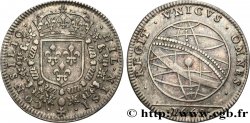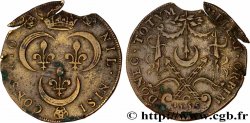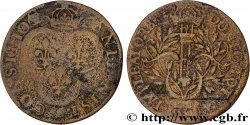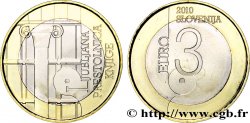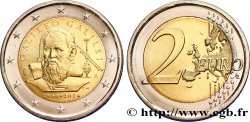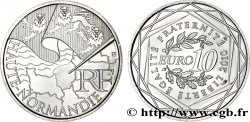v11_1104 - CONSEIL DU ROI / KING'S COUNCIL LA GUERRE DE TRENTE ANS et prise de Gravelines 1645
MONNAIES 11 (2002)
Starting price : 121.96 €
Estimate : 304.90 €
Realised price : 144.22 €
Number of bids : 3
Maximum bid : 147.57 €
Starting price : 121.96 €
Estimate : 304.90 €
Realised price : 144.22 €
Number of bids : 3
Maximum bid : 147.57 €
Type : LA GUERRE DE TRENTE ANS et prise de Gravelines
Date: 1645
Metal : silver
Diameter : 26,5 mm
Orientation dies : 6 h.
Weight : 5,10 g.
Edge : lisse
Rarity : R2
Coments on the condition:
Extraordinaire patine bleue sur le cercle de la légende et rose pâle sur le centre au revers et rose-orangé clair sur l’avers. Le flan est régulier et assez large
Catalogue references :
Obverse
Obverse legend : .NIL. NISI./.CONSILIO..
Obverse description : Écu de France couronné entouré du collier de l’ordre de Saint Michel et de celui du Saint Esprit.
Obverse translation : (Rien sans le Conseil).
Reverse
Reverse legend : .NOSTRIS. PARS. REDDITA. TERRIS..
Reverse description : La Victoire volant dans les airs, apportant une palme aux vainqueurs ; au-dessous, la vue des fortifications, l’embouchure de l’Aa et le territoire de Gravelines ; à l'exergue : .1645..
Reverse translation : (Une partie de nos terres nous a été rendue).
Commentary
Les Espagnols occupèrent Gravelines et y construisirent de nombreuses fortifications. Le duc d’Orléans en fit le siège et au bout de quatre jours d’attaque intensive réussit à prendre le fort Philippe. Les Espagnols se retirèrent dans la ville et le duc d’Orléans fit ouvrir une tranchée dans la nuit du 16 au 17 juin 1644. Après deux assauts sanglants, les Français prirent deux bastions. Le gouverneur capitula le 28 juillet 1644. La prise de Gravelines fut le sujet d’une médaille de la série uniforme de Louis XIV.
La guerre de Trente Ans , conflit politique et religieux, dévasta l’Allemagne de 1618 à 1648. À compter de 1625, elle devient européenne avec les interventions danoise et suédoise puis la France de Richelieu qui intervient contre l’Empire et l’Espagne. Les Français qui connurent d’abord des revers (prise de Corbie et Paris menacé en 1636) redressèrent la situation dès 1638. C’est dans ce contexte que le Roussillon fut occupé en 1642, que Condé écrasa les Espagnols à Rocroi et que Gravelines, ville située sur la Manche à l’embouchure de l’Aa, fut prise le 29 juillet 1644 par Gaston d’Orléans. Elle sera ensuite perdue, reprise par le Maréchal de la Ferté en 1658 et deviendra définitivement française en 1659 lors de la paix des Pyrénées. Vauban construira alors de nouvelles fortifications.
The Spanish occupied Gravelines and built numerous fortifications there.. The Duke of Orleans laid siege to it and after four days of intensive attack succeeded in taking Fort Philippe.. The Spanish withdrew into the city and the Duke of Orleans had a trench dug on the night of June 16-17, 1644.. After two bloody assaults, the French took two bastions. The governor capitulated on July 28, 1644.. The capture of Gravelines was the subject of a medal from the uniform series of Louis XIV.
The Thirty Years' War, a political and religious conflict, devastated Germany from 1618 to 1648.. From 1625, it became European with Danish and Swedish interventions, then Richelieu's France, which intervened against the Empire and Spain.. The French, who initially suffered setbacks (the capture of Corbie and Paris threatened in 1636), recovered from the situation in 1638.. It was in this context that Roussillon was occupied in 1642, that Condé crushed the Spanish at Rocroi and that Gravelines, a town located on the English Channel at the mouth of the Aa, was taken on July 29, 1644 by Gaston d'Orléans. It was then lost, recaptured by Marshal de la Ferté in 1658 and became definitively French in 1659 during the Peace of the Pyrenees.. Vauban will then build new fortifications
La guerre de Trente Ans , conflit politique et religieux, dévasta l’Allemagne de 1618 à 1648. À compter de 1625, elle devient européenne avec les interventions danoise et suédoise puis la France de Richelieu qui intervient contre l’Empire et l’Espagne. Les Français qui connurent d’abord des revers (prise de Corbie et Paris menacé en 1636) redressèrent la situation dès 1638. C’est dans ce contexte que le Roussillon fut occupé en 1642, que Condé écrasa les Espagnols à Rocroi et que Gravelines, ville située sur la Manche à l’embouchure de l’Aa, fut prise le 29 juillet 1644 par Gaston d’Orléans. Elle sera ensuite perdue, reprise par le Maréchal de la Ferté en 1658 et deviendra définitivement française en 1659 lors de la paix des Pyrénées. Vauban construira alors de nouvelles fortifications.
The Spanish occupied Gravelines and built numerous fortifications there.. The Duke of Orleans laid siege to it and after four days of intensive attack succeeded in taking Fort Philippe.. The Spanish withdrew into the city and the Duke of Orleans had a trench dug on the night of June 16-17, 1644.. After two bloody assaults, the French took two bastions. The governor capitulated on July 28, 1644.. The capture of Gravelines was the subject of a medal from the uniform series of Louis XIV.
The Thirty Years' War, a political and religious conflict, devastated Germany from 1618 to 1648.. From 1625, it became European with Danish and Swedish interventions, then Richelieu's France, which intervened against the Empire and Spain.. The French, who initially suffered setbacks (the capture of Corbie and Paris threatened in 1636), recovered from the situation in 1638.. It was in this context that Roussillon was occupied in 1642, that Condé crushed the Spanish at Rocroi and that Gravelines, a town located on the English Channel at the mouth of the Aa, was taken on July 29, 1644 by Gaston d'Orléans. It was then lost, recaptured by Marshal de la Ferté in 1658 and became definitively French in 1659 during the Peace of the Pyrenees.. Vauban will then build new fortifications








 Report a mistake
Report a mistake Print the page
Print the page Share my selection
Share my selection Ask a question
Ask a question Consign / sell
Consign / sell
 Full data
Full data
